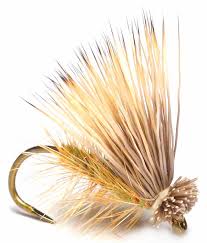
Caddis flies have just never been given the same attention as mayflies by fly fishermen. Pick any mayfly out there and it’s not difficult to find its Latin name and a separate common name. Likely, you’ll also find multiple fly patterns imitating every possible stage of just that one particular species.
That’s not the case with caddis. They are often just described by their size and color: green caddis, yellow caddis, dun caddis, etc. Sure there are different patterns out there like the Neversink Caddis and the Henryville Special, but they are just different variations of generic patterns, intended to represent a host of different caddis by varying the size and color. I don’t know exactly why that is, but I suppose in a sport where we often overcomplicate things, a little simplicity is refreshing. But don’t confuse simplicity with lack of importance as caddis flies can be found on most every trout stream in the United States.
The most popular and widely used fly pattern for a caddis adult is the Elk Wing Caddis, also called the Elk Hair Caddis. It was created by Pennsylvania fly fishing legend, Al Troth, in 1957. At least that seems to be when it was first written about. I’m sure he was fishing it before then. Since that time, it has become a staple in most every fly angler’s box not only as a caddis imitation, but also as an effective searching pattern when no hatch is present. It’s a great fly in the Smokies almost all year.
Seasonal Variations
In the early spring, I use smaller versions, usually with darker bodies to represent the darker caddis and stoneflies we see that time of year. As we get into late spring and early summer, the patterns get a little bigger and lighter, with tan bodies mostly. From late spring through early fall, a yellow body makes a great imitation for the prolific Little Yellow Sally stonefly. And by fall, I’m back to using tan, olive and even rust colored bodies.
The Elk Wing Caddis is a fairly simple dry fly to tie and again, allows for a lot of variation. By changing the color of the body, the hackle and/or the wing, you can imitate most any down-wing fly on the water. Below is a recipe for the Elk Wing Caddis I fish most often.
Elk Wing Caddis – Tan
Hook: Standard dry fly, size 16-12*
Thread: Brown 8/0
Hackle: Brown rooster, palmered
Body: Superfine dubbing, tan
Wing: Natural elk hair
* This is the common size range in which I tie this tan caddis. General hook size for caddis imitations can range from size 10 down to size 20 (and smaller).

